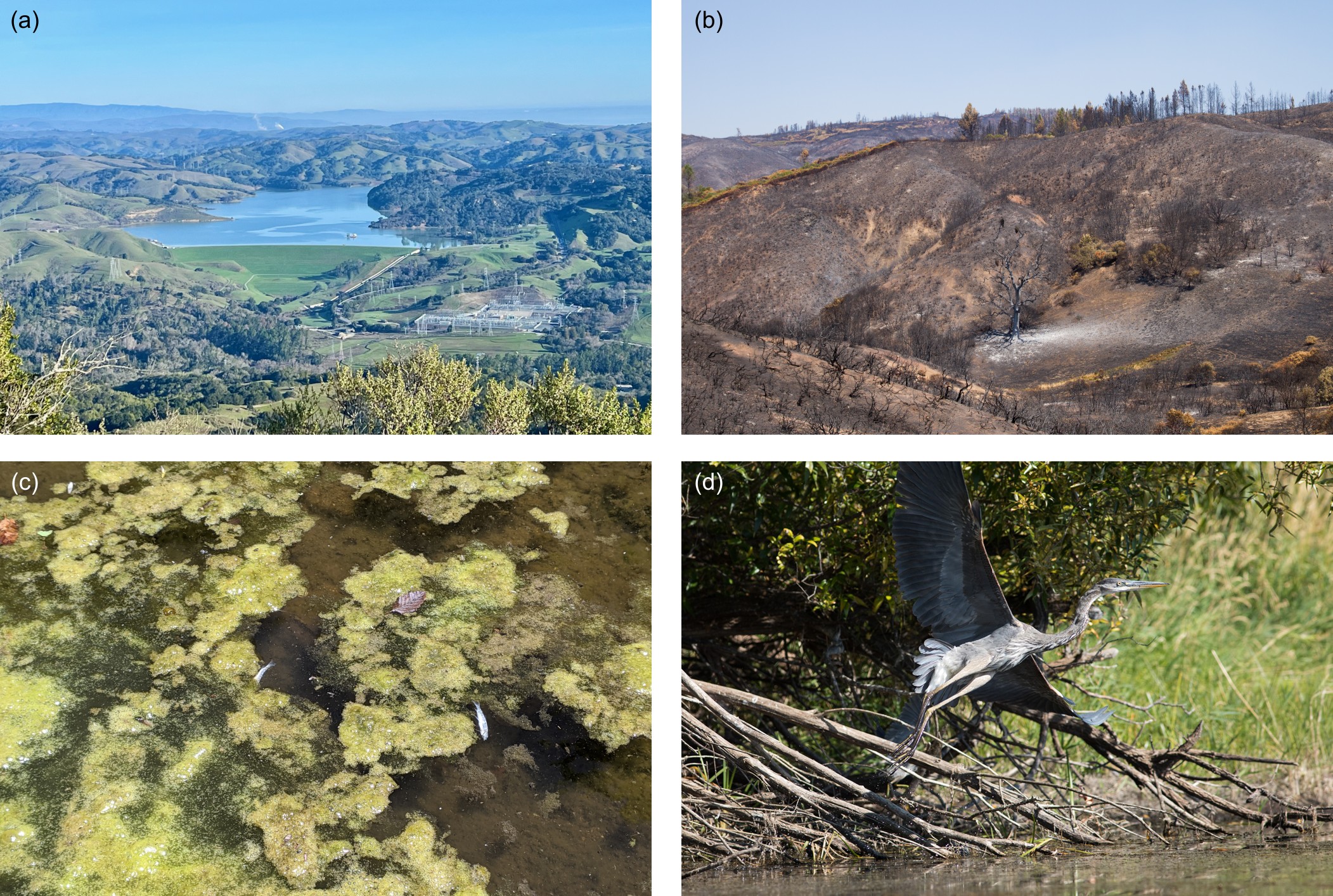Berkeley Researchers Present Plan for Freshwater Conservation
The 30x30 initiative is a global effort to set aside 30% of land and sea area for conservation by 2030, a move scientists hope will reverse biodiversity loss and mitigate the effects of climate change. Now adopted by state and national governments around the world, 30x30 creates an unprecedented opportunity to advance global conservation.
When it comes to the water side of 30x30, most programs focus primarily on conservation of oceans, but a new study by researchers at the University of California, Berkeley argues that freshwater ecosystems must not be neglected. Published today in the journal Frontiers in Ecology and the Environment, the paper urges policy makers to explicitly include freshwater ecosystems like rivers, lakes, and wetlands in 30x30 plans, and outlines how their conservation will be critical to achieving the initiative’s broader goals.

Freshwater systems provide critical ecosystem services that enable agriculture, transportation, recreation, economic productivity, and drinking water systems. They support biodiversity and also play an important role in climate resilience by storing soil carbon.
Yet, freshwater ecosystems are being lost at disproportionately high rates relative to terrestrial (land) systems. They are highly vulnerable to biodiversity loss and climate change, and would benefit from dedicated conservation efforts, the study authors said.
“Freshwater ecosystems are especially fragile and often overlooked in global conservation initiatives,” said Jessie Moravek the study’s lead author and a doctoral student in the Department of Environmental Science, Policy, and Management (ESPM). “Many times, conservation practitioners assume that water is protected just because the land around it is protected, but that’s not always the case. Rivers, lakes, and wetlands usually need special attention.”
Moravek and her co-authors suggest that while protecting rivers, lakes, and watersheds is closely linked with land conservation, effective conservation of freshwater ecosystems requires unique strategies. They point to recent studies that demonstrate that land-based conservation initiatives lacking explicit freshwater priorities often contribute to the decline of freshwater habitats and species. In contrast, studies show that conservation efforts focusing on a freshwater network and the surrounding watershed confer conservation benefits to both freshwater and terrestrial environments.
As policymakers at state and national levels work to define what qualifies as conserved and develop conservation solutions and priority areas, the authors propose that freshwater ecosystems must be taken into account.
Planning effective conservation
To better include freshwater ecosystems in 30x30 plans, the authors recommend designing and refining conservation programs using five freshwater-specific priorities: river connectivity, watershed disturbance, streamflow alteration, water quality, and biodiversity. The authors stress that incorporating these characteristics in planning and monitoring will help ensure that 30x30 initiatives focus on important aspects of river conservation that support 30x30’s big-picture goals.
“While 30x30 programs vary in their approach, they share a mission of addressing climate change, economic sustainability, food security, and equitable outdoor access,” said co-author and ESPM professor Justin Brashares.
“Making freshwater ecosystems an explicit focus of 30x 30 initiatives can help meet these goals, while also benefiting the many species and human livelihoods that depend on our vulnerable freshwater resources.”
The paper also describes watershed-oriented conservation and explains how such an approach can benefit both freshwater and terrestrial environments. Planning conservation policies for entire watersheds—the land area that drains to a particular river or stream—can center fragile freshwater ecosystems in the planning process and help water managers integrate the conservation priorities identified in this study.
“Watersheds are a natural geographical way of dividing up land, which is helpful for thinking about area-based conservation targets in a program like 30x30,” said Moravek.
The paper also examines the process for planning 30x30 in California and recommends how freshwater could be considered in each step of the process. The state is often considered a leader in climate policy, leading the authors to suggest that the state’s 30x30 initiative can be an example of how to effectively incorporate freshwater ecosystems into 30x30 plans.
Additional authors of the paper are ESPM PhD students Lucy Andrews, Mitchell Serota, Melissa Chapman, Amy Van Scoyoc, and Guadalupe Verta; ESPM alumni and current postdoctoral students Christine Wilkinson and Phoebe Parker-Shames; and ESPM alum Janelle Dorcy, now an environmental scientist at the California Department of Fish and Wildlife.
